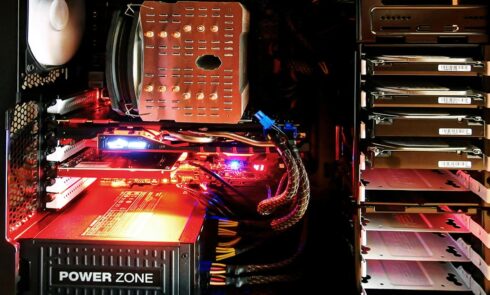The global landscape of manufacturing is undergoing a profound transformation, driven by the rapid advancement of digital technologies. Traditional manufacturing, which has long been rooted in assembly lines, manual labor, and physical tools, is now evolving into a highly automated, data-driven industry. This shift is not just a trend—it is a fundamental change that is reshaping how products are designed, produced, and delivered. The convergence of technologies like the Internet of Things (IoT), artificial intelligence (AI), big data, cloud computing, and robotics is paving the way for what is now called Industry 4.0. As a result, businesses in manufacturing sectors must adapt to stay competitive in an increasingly digital world.
1. The Emergence of Smart Manufacturing
Smart manufacturing refers to the integration of digital technologies, advanced automation, and data analytics into the production process. These technologies allow manufacturers to optimize production, improve efficiency, and reduce costs. Key components of smart manufacturing include:
- Internet of Things (IoT): Sensors and connected devices gather real-time data from machines, tools, and products throughout the production line. This data is used to monitor performance, predict maintenance needs, and enhance product quality. IoT devices also facilitate the creation of a smart factory where equipment can communicate and collaborate autonomously.
- Artificial Intelligence and Machine Learning: AI and machine learning algorithms enable predictive maintenance, quality control, and process optimization. By analyzing vast amounts of data, these technologies can identify patterns and make decisions that improve efficiency and reduce downtime.
- Automation and Robotics: Advanced robotics and automated systems are replacing manual labor in many manufacturing tasks. These systems work faster, more accurately, and without fatigue, enabling higher production rates and fewer errors.
The shift toward smart manufacturing allows businesses to operate more flexibly, quickly respond to market changes, and offer customized solutions at scale. These advancements are not only improving product quality but also making production processes more sustainable by reducing waste and energy consumption.
2. The Role of Big Data and Analytics
Big data is revolutionizing traditional manufacturing by enabling companies to gather and analyze vast amounts of information from every stage of the production process. This data is crucial for making informed decisions and gaining deeper insights into operations.
- Predictive Analytics: By analyzing data collected from sensors and machines, predictive analytics can anticipate equipment failures before they occur, reducing downtime and maintenance costs.
- Supply Chain Optimization: Big data enables more efficient management of inventory and logistics. It helps manufacturers track the movement of goods in real-time, forecast demand, and ensure that materials are available when needed, all while minimizing excess inventory.
- Customization and Personalization: Data analytics allows manufacturers to better understand customer needs and trends. This enables the production of customized products that meet individual consumer preferences, leading to higher customer satisfaction and loyalty.
By utilizing big data, companies can make more precise decisions that improve operational efficiency, reduce costs, and enhance their competitive edge in a crowded market.
3. Cloud Computing and Collaborative Platforms
Cloud computing has become a cornerstone of digital transformation in manufacturing. By migrating critical systems and data to the cloud, manufacturers gain flexibility, scalability, and cost savings.
- Data Accessibility and Collaboration: Cloud-based systems allow employees, suppliers, and partners to access real-time data from anywhere in the world, enabling better collaboration and faster decision-making. Teams can work together on product designs, share insights, and solve problems in real time.
- Cost Efficiency: Cloud computing reduces the need for expensive on-premises infrastructure, as companies can use scalable resources based on demand. This allows smaller businesses to compete with larger manufacturers by providing access to powerful computing resources without high upfront costs.
- Agility and Innovation: Cloud-based tools facilitate faster innovation cycles by enabling rapid prototyping, testing, and collaboration. Manufacturers can experiment with new product ideas and business models without the heavy investment in traditional IT infrastructure.
4. Digital Twin Technology
One of the most exciting developments in manufacturing is the rise of digital twin technology. A digital twin is a virtual replica of a physical object, process, or system, created using real-time data collected from sensors and other sources. These virtual models allow manufacturers to simulate, monitor, and optimize the performance of their physical assets.
- Product Development: Manufacturers can create digital twins of products during the design phase to test and refine designs before producing physical prototypes. This accelerates the product development process and reduces costs.
- Operational Efficiency: Digital twins allow manufacturers to monitor the health and performance of equipment in real-time. Predictive analytics can be applied to digital twins to forecast potential failures and optimize maintenance schedules, reducing downtime and improving operational efficiency.
- Supply Chain Management: Digital twins of the supply chain provide real-time visibility into the movement of raw materials, components, and finished products. This improves inventory management and ensures timely delivery of products to customers.
5. The Challenges of Digital Transformation
Despite the immense potential of digital transformation, traditional manufacturers face several challenges in adopting new technologies:
- High Initial Investment: The transition to a digital manufacturing environment requires significant investment in new equipment, software, and employee training. While the long-term benefits are substantial, the upfront costs can be a barrier, particularly for small and medium-sized enterprises (SMEs).
- Cybersecurity Risks: As manufacturing systems become more connected, the risk of cyberattacks grows. Companies must invest in robust cybersecurity measures to protect sensitive data and ensure the integrity of their operations.
- Workforce Skills: The shift to digital manufacturing requires new skills, including proficiency in data analysis, robotics, and AI. Manufacturers must invest in workforce development and training programs to equip their employees with the skills needed to succeed in a digital environment.
- Legacy Systems Integration: Many manufacturers still rely on outdated legacy systems that are not compatible with modern digital tools. Integrating these systems with new technologies can be complex and time-consuming.
6. The Future of Traditional Manufacturing in a Digital World
As digitization continues to reshape the manufacturing industry, traditional manufacturers will need to adapt or risk falling behind. The future will be defined by smart factories, automation, advanced analytics, and new collaborative models that enhance efficiency, productivity, and sustainability.
By embracing digital transformation, manufacturers can not only improve their own operations but also contribute to the creation of smarter, more sustainable supply chains. In a world increasingly driven by technology, those who fail to evolve may find themselves left behind as digital-native competitors gain ground.
In conclusion, the transformation of traditional manufacturing through global digitization is not just a passing trend but a necessary evolution for staying competitive in a fast-changing market. The next decade will see a greater integration of technology in manufacturing, from AI and IoT to cloud computing and digital twins, enabling manufacturers to meet the demands of a digital-first world.


